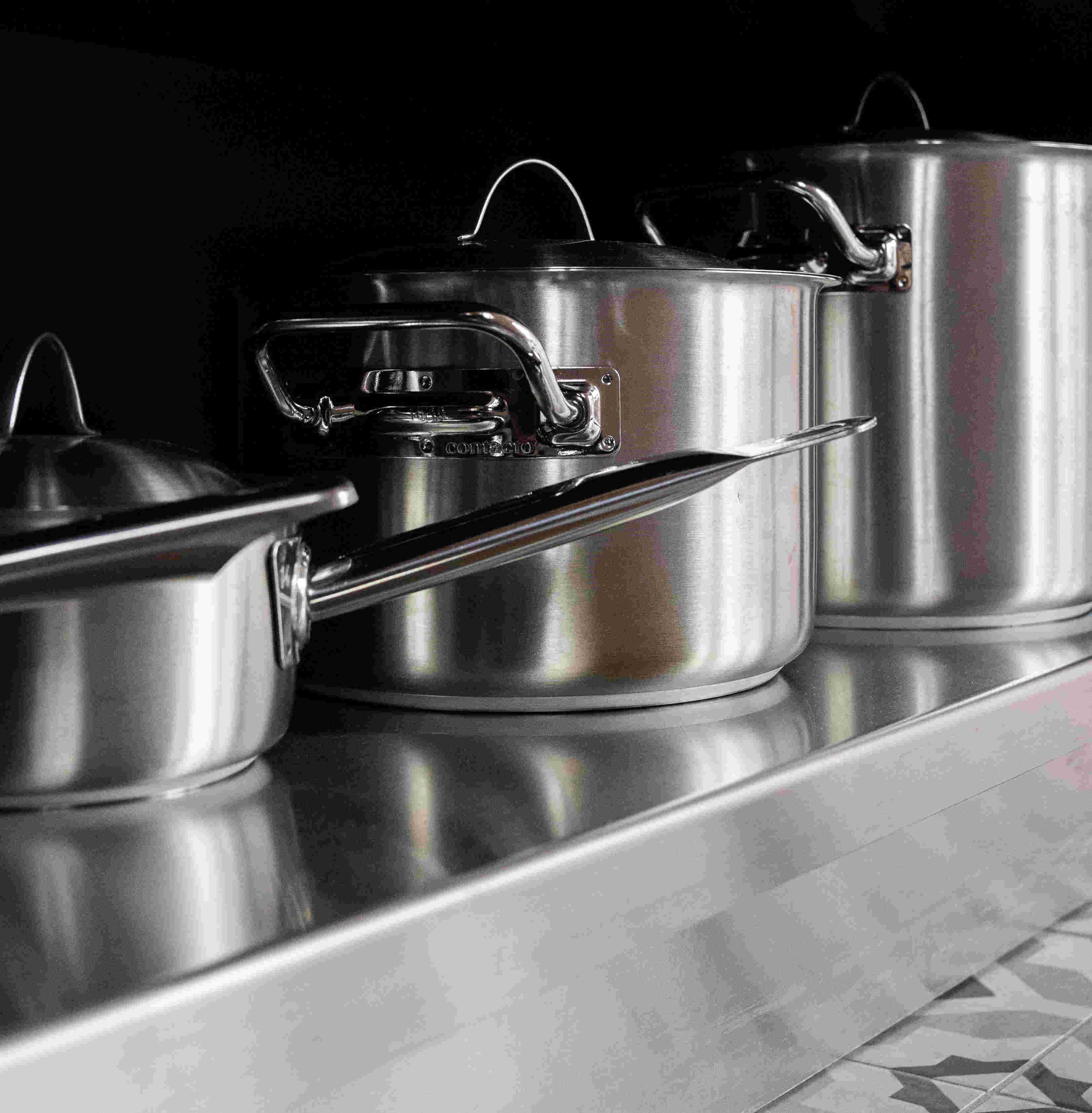
In the journey of bringing cooking and catering passions and skills to fruition, every choice that is made, from buying a spoon to a fabrication, has an impact. As you plan a new commercial kitchen or an upgrade of your existing one, you need to begin by listing the equipment that will enable seamless operations whilst remaining hygienic in your kitchen.
Stainless steel serves as a hero element in most of the equipment that a professional kitchen hosts. From essential pots and pans to stainless steel shelves and stainless steel worktops, this go-to choice is the preferred material used for manufacturing of catering equipment, catering utensils and catering fabrication.
What Makes Stainless Steel the Perfect Choice For Catering Fabrication?
Strength & Durability
When you invest in equipment for your foodservice kitchen, it's extremely important to determine that appliances or fabrications are up to the task. Stainless steel catering fabrication can withstand even heavy wear and tear that is a result of a busy kitchen operating continuously for months and years.
Resists Corrosion & High Temperature
Your worktops and catering tables are regularly exposed to liquids which usually lead to corrosion: this doesn't happen with a catering grade stainless steel worktop. Stainless steel kitchens can also stand strong against the test of temperature that they go through on a daily basis without having any major impact or warping effect.
Hygienic & Easy To Clean
The best thing a foodservice or catering business can have at the end of a workday is a kitchen that cleans easily. Stainless steel kitchens are extremely convenient to clean, wipe, and sanitise as they don't hold germs, which reduces the risk of bacteria to the maximum extent. After all, healthy kitchens lead to happy customers.
How To Clean Stainless Steel Worktops
Keep a microfibre cloth handy to clean your stainless steel work surfaces, including worktops, sinks, and shelves. Mild dish soaps, glass cleaning liquids, and cleansers can be used for cleaning purposes as they do not react with the surface and help you clean with ease.
Remember to wipe off any type of cleanser that you use on the stainless steel worktops and buff them well until they're dry to avoid any formation of bubbles or water spots on the surfaces.

How To Remove Scratches From Stainless Steel Worktops
To keep your stainless steel worktops and catering tables as sleek and good as new, take care of the scratches in the following two ways:
⦁ For minor or small scratches, a non-abrasive stainless steel compound or items like baking soda and non-gel-based toothpaste can be used. Use a microfiber cloth to apply it to the surface and gently wipe it off in the direction of the grain. Voila! The scratches are gone.
⦁ For tougher ones, rubbing with an abrasive pad or super-fine sandpaper will do the job. Ensure that you do not use this method on a coated stainless steel worktop. If your stainless steel worktop is coated, use olive oil and gently rub, or refer to the user manual for instructions.
Things To Think About Before Buying Your Stainless Steel Kitchen Fabrications
⦁ Calculate the surface area of your kitchen and the amount of storage and food prep worktop you require before selecting equipment and fabrication sizes. Make sure there is sufficient space to operate in the kitchen, prepare foods, plate up, cook and plenty of valuable storage.
⦁ Plan the layout of your warewashing area to ensure a smooth production line is in place from the area where dirty plates and cooking utensils are taken through to a space where cleaned loads are stored. Consider stainless steel dishwasher tabling and stainless steel sinks and how they can work for your layout. Do you need a single or double sink and which side would drainers be more conveniently placed?
⦁ Select the right grade of stainless steel for your kitchen. Equipment will commonly be manufactured using 304 grade stainless steel that contains chromium and nickel for strength, easy cleaning and sanitisation and resistance against corrosion. 316 grade, highly resistant to corrosion caused by acids and 430 grade which is tolerant of acidic food and resistant to oxidisation are also used.
⦁ Consider whether stainless steel tables and food prep counters are to be wall positioned or centrally placed. For larger commercial kitchens that have plenty of space to work with a central stainless steel island can create an easy flow throughout each kitchen section. Stainless steel wall tables will feature a small upstand at the rear which acts not only as protection for the wall from splashes but also to prevent crumbs and food debris from falling into awkward hard to reach areas that may be inaccessible when cleaning.
⦁ Decide whether you want to wall mount kitchen cupboards which can increase worktop spaces or let stainless steel shelving and racking stand freely in your kitchen. Choose a structure that suits your kitchen's space and creates the perfect balance between maximising storage space, enhancing workflow and efficiency and maintaining the aesthetic value.
Food regulations, laws and food safety guidelines will help make choices more efficiently as they serve as a guide to what is right and most importantly safe for you, your kitchen, and your customers. A huge amount of planning goes into creating a safe, hygienic, and durable professional kitchen including choosing the most suitable stainless steel catering fabrications. Ensure you put sufficient time into planning and choosing the right stainless steel equipment and fabrications to avoid waste of time, energy, and resources in the future.
